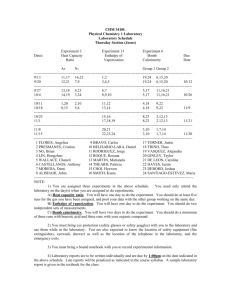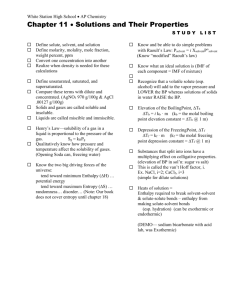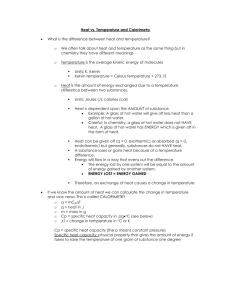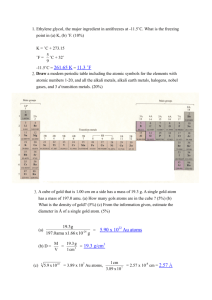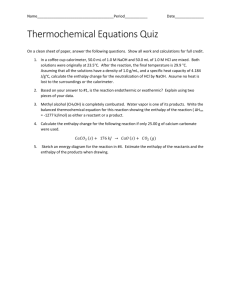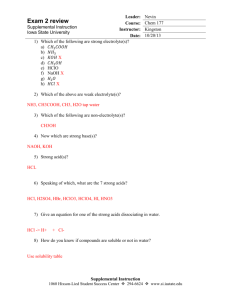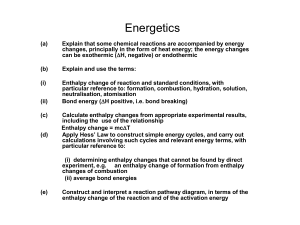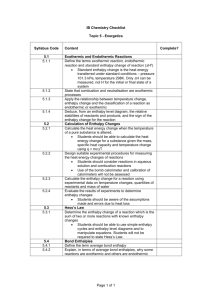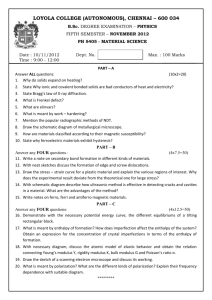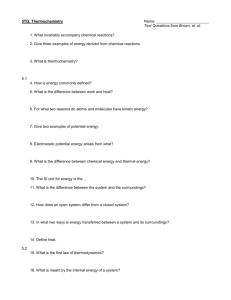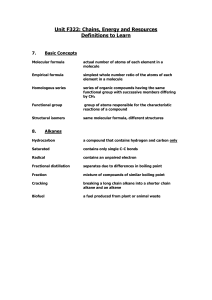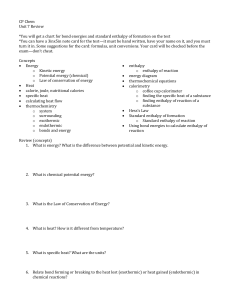chapter five reading guide-Kotz
advertisement
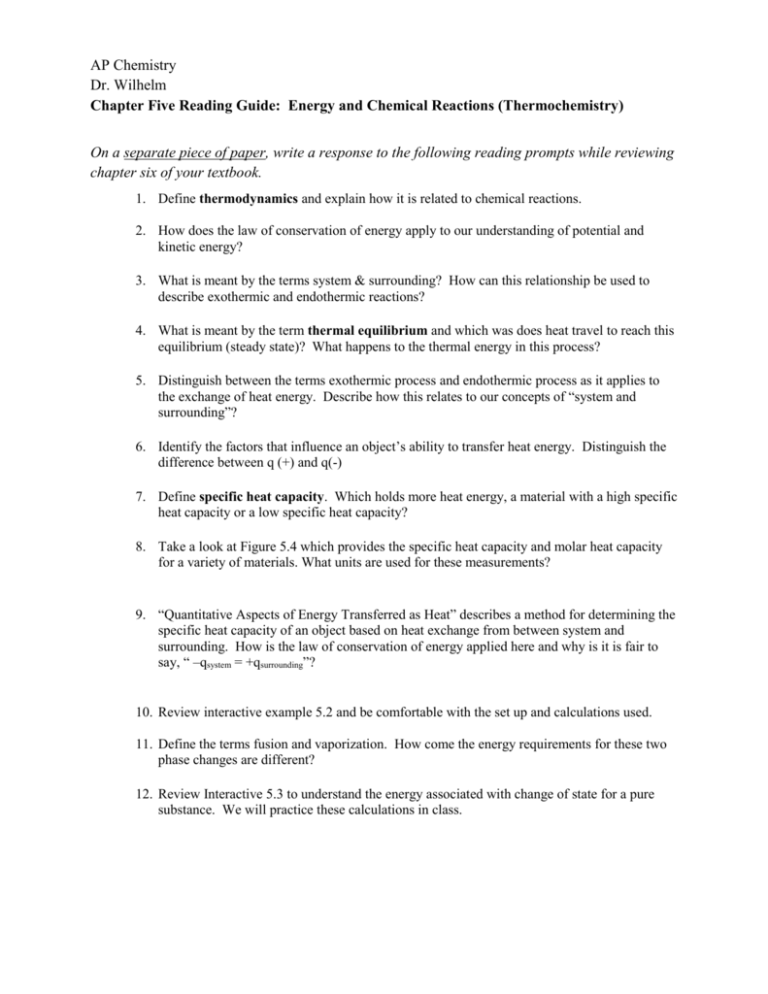
AP Chemistry Dr. Wilhelm Chapter Five Reading Guide: Energy and Chemical Reactions (Thermochemistry) On a separate piece of paper, write a response to the following reading prompts while reviewing chapter six of your textbook. 1. Define thermodynamics and explain how it is related to chemical reactions. 2. How does the law of conservation of energy apply to our understanding of potential and kinetic energy? 3. What is meant by the terms system & surrounding? How can this relationship be used to describe exothermic and endothermic reactions? 4. What is meant by the term thermal equilibrium and which was does heat travel to reach this equilibrium (steady state)? What happens to the thermal energy in this process? 5. Distinguish between the terms exothermic process and endothermic process as it applies to the exchange of heat energy. Describe how this relates to our concepts of “system and surrounding”? 6. Identify the factors that influence an object’s ability to transfer heat energy. Distinguish the difference between q (+) and q(-) 7. Define specific heat capacity. Which holds more heat energy, a material with a high specific heat capacity or a low specific heat capacity? 8. Take a look at Figure 5.4 which provides the specific heat capacity and molar heat capacity for a variety of materials. What units are used for these measurements? 9. “Quantitative Aspects of Energy Transferred as Heat” describes a method for determining the specific heat capacity of an object based on heat exchange from between system and surrounding. How is the law of conservation of energy applied here and why is it is fair to say, “ –qsystem = +qsurrounding”? 10. Review interactive example 5.2 and be comfortable with the set up and calculations used. 11. Define the terms fusion and vaporization. How come the energy requirements for these two phase changes are different? 12. Review Interactive 5.3 to understand the energy associated with change of state for a pure substance. We will practice these calculations in class. 13. The attached figure is a more traditional diagram for a heating profile (compared to figure 5.6). Review section 5.3 which describes energy associated with change of state. Where can we find the enthalpy of fusion and vaporization on this diagram? 14. We will briefly review the 1st Law of Thermodynamics to get an understanding of internal energy (U) and the relationship between heat energy (q) and work energy (w). 15. Define enthalpy (H) and explain why enthalpy calculations describe energy exchange under constant pressure. Why does ΔH = q ? 16. Define the term “state function”. 17. What is meant by standard reaction enthalpy? Why is the symbol ΔH° used and why are the units used to define this kJ/mole? 18. List the four basic principle of enthalpy (bulleted-pg. 225) 19. What is calorimetry and how does a calorimeter work? 20. What distinguishes a bomb calorimeter? Describe the type of reaction that may be monitored using bomb calorimetry. 21. Describe Hess’s law and how it relates to the state function properties of enthalpy. 22. Review the energy diagrams in figure 5.13. See if you can interpret how these diagrams are supported by Hess’s law and the concept of state functions. 23. What is standard molar enthalpy of formation ( ΔH°f). Why are fractions used in writing enthalpy of formation equations? 24. Enthalpy of formation can be used to calculation the enthalpy of a reaction. Identify the equation used (5.6) and review Interactive 5.9 to see how this calculation is done. 25. Take a moment to read the Case Study at the end of the chapter which addresses the use of ethanol as a fuel source. This gives a nice perspective of how our understanding of chemistry can be used in addressing fuel efficiency and environmental concerns. (Both of which are important to all of our futures!)
